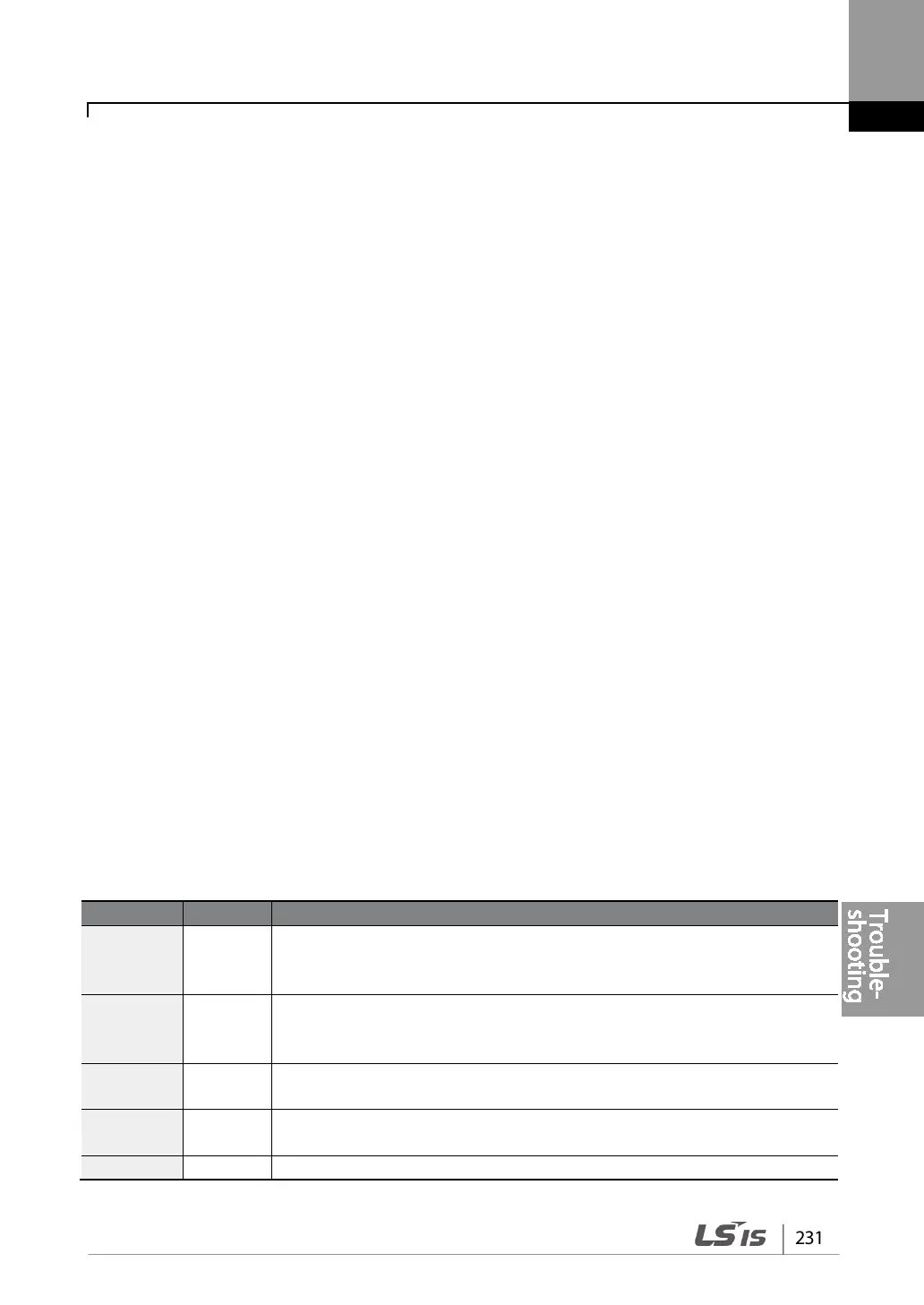7 Troubleshooting
This chapter explains how to troubleshoot a problem when inverter protective functions, fault
trips, warning signals, or a fault occurs. If the inverter does not work normally after following the
suggested troubleshooting steps, please contact the LSIS customer service center.
7.1 Trips and Warnings
When the inverter detects a fault, it stops the operation (trips) or sends out a warning signal. When
a trip or warning occurs, detailed information is shown on the LCD display. Users can read the
warning message at PRT-90. When more than 2 trips occur at roughly the same time, the LCD
keypad shows the information for the fault trip that occurred first.
The fault conditions can be categorized as follows:
• Level: When the fault is corrected, the trip or warning signal disappears and the fault is not
saved in the fault history.
• Latch: When the fault is corrected and a reset input signal is provided, the trip or warning
signal disappears.
• Fatal: When the fault is corrected, the fault trip or warning signal disappears only after the
user turns off the inverter, waits until the charge indicator light goes off, and turns the inverter
on again. If the the inverter is still in a fault condition after powering it on again, please
contact the supplier or the LSIS customer service center.
7.1.1 Fault Trips
Protection Functions for Output Current and Input Voltage
Overload Latch
Displayed when the motor overload trip is activated and the actual load
level exceeds the set level. Operates when PRT-20 is set to a value other than
Underload Latch
Displayed when the motor underload trip is activated and the actual load
level is less than the set level. Operates when PRT-27 is set to a value other
Latch Displayed when inverter output current exceeds 200% of the rated current.
Latch Displayed when internal DC circuit voltage exceeds the specified value.
Displayed when internal DC circuit voltage is less than the specified value.
